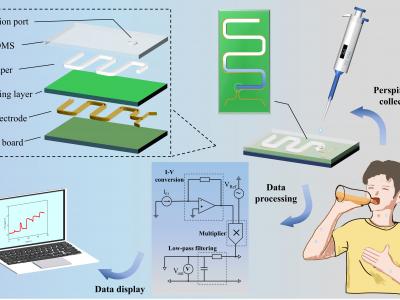Sensors

Satellite attitude determination is critical for accurately measuring and controlling a satellite’s orientation in orbit using a variety of sensors and methods. Currently, low-low Satellite-to-Satellite Tracking (ll-SST) missions—such as GRACE(-FO)—and upcoming missions like Magic primarily rely on quaternion data from onboard star camera sensors. To enhance attitude determination, we propose a GSCF fusion method.
- Categories:
 7 Views
7 Views
Spray-cooled shells of electric arc furnaces (EAF) experience dynamic and intense thermal fluctuations that, if undetected, can lead to significant operational challenges, including structural damage and compromised safety. In this study, we demonstrate the use of fiber optic sensors (FOS) for real-time, distributed thermal monitoring of an EAF shell wall.
- Categories:
 14 Views
14 Views
In recent years, with the rapid development of Internet of Things technology, the application and popularization of intelligent sports equipment in residents’ lives have become extensive. As a sport suitable for all ages, badminton is deeply loved by the masses. This paper designs a smart badminton racket to help students improve their badminton skills by providing real-time training data and three-dimensional posture information.
- Categories:
 24 Views
24 Views
This is a random subset of FAST data from June 2024. The data has undergone coordinate system transformation and downsampling processing, with a frequency of 1 Hz (The original data includes IMU data from the FAST feed cabin platform sampled at 400 Hz and theoretical trajectory data calculated by the FAST Observatory, both sampled at 1 Hz).
- Categories:
 10 Views
10 Views
This research examines the creation and evaluation of directional eddy current probes designed to identify in-plane waviness in uncured carbon fibre reinforced polymers (CFRP). A new finite element modeling technique was used to precisely replicate current density distortions caused by waviness. A sample made from uncured IM7/8552 prepreg with in-plane waviness on its top layer was produced
- Categories:
 27 Views
27 Views
This ZIP file contains two distinct datasets collected over a 13, 14 and 15-day periods.
- Categories:
 39 Views
39 Views
The experimental data in this paper comes from the Optimal Interpolation Sea Surface Temperature (OISST) data provided by the National Oceanic and Atmospheric Administration (NOAA). The data can be accessed at https://www.esrl.noaa.gov/psd/. The dataset includes daily mean sea surface temperature data from January 2010 to December 2020, with a spatial resolution of 0.25◦ × 0.25◦. We selected the datasets from the Bohai Sea and the South China Sea. Detailed information is provided in Table I.
- Categories:
 8 Views
8 ViewsMonitoring sweat rate provides valuable insights into an individual’s risk of dehydration, thermoregulation efficiency, and electrolyte balance, particularly relevant for workers in hot environments, athletes, and individuals with certain metabolic conditions. Traditional methods for measuring sweat rates, such as gravimetric techniques, are labor-intensive and unsuitable for real-time monitoring.
- Categories:
 227 Views
227 Views
There are four scripts in this repository in the "code" folder.The"fft RF-AM-MLP.py","fft-MLP.py","Linear static.py" are the training and testing procedures of "RF-AM-MLP","MLP" and "static linear model" respectively. And after training all the three models are saved to remain there parameters unchanged.The "fft plot figures.py" compares the three models using different validation sets which are 30rpm,60rpm,100rpm and variable rates.And different figures are drawn to show the prediction results and error distribution of the three models.
- Categories:
 49 Views
49 Views
